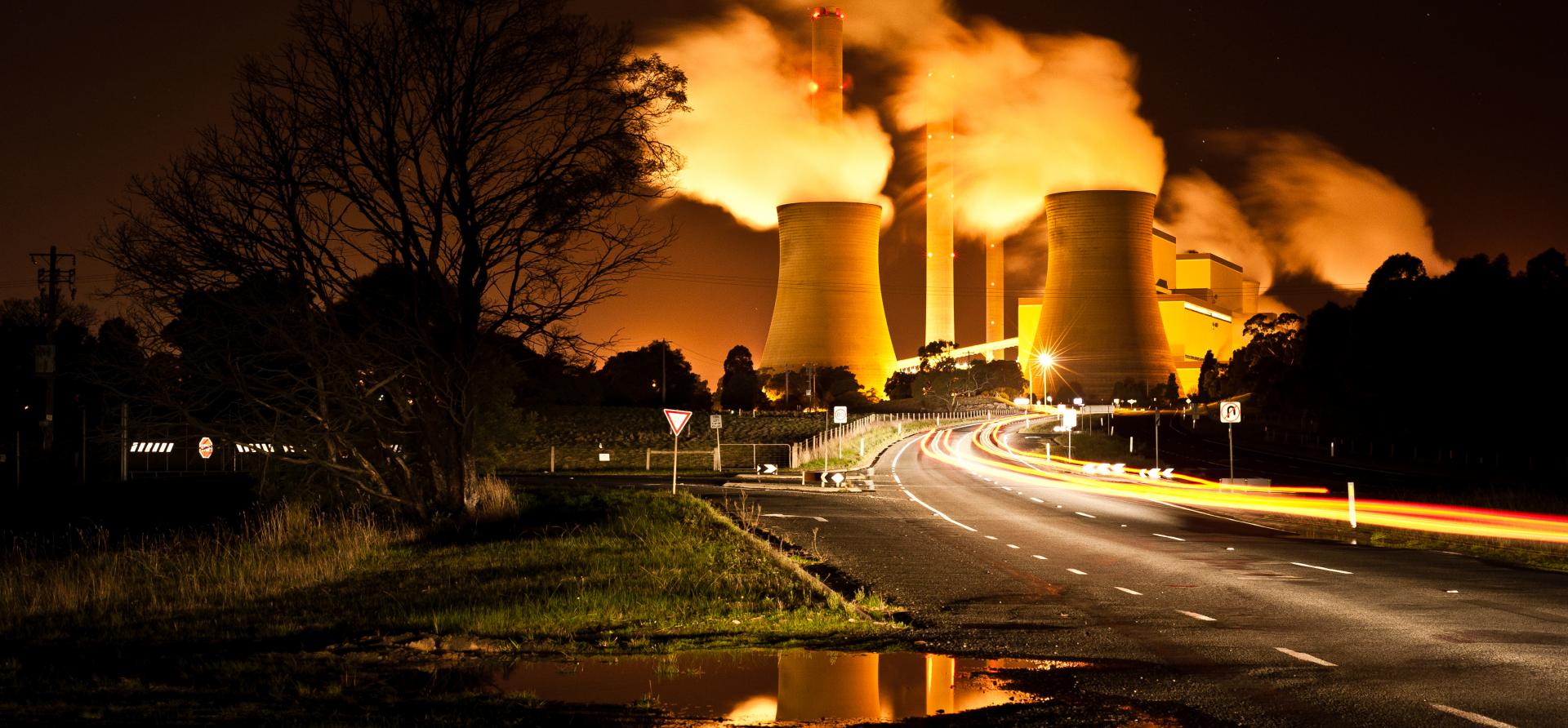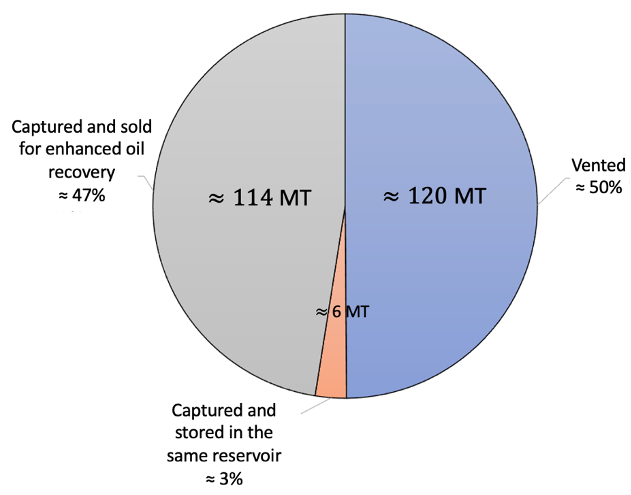Carbon capture to serve enhanced oil recovery: Overpromise and underperformance
Download Full Report

Key Findings
Still operating today, the Shute Creek CCUS plant, the world’s largest and third oldest, belongs to an era where there was little public discussion around climate change.
The project has rarely met its maximum capacity during its 35-year lifetime.
About 114 million tonnes or 95% of Shute Creek’s captured carbon dioxide has been used for enhanced oil recovery.
Executive Summary
ExxonMobil’s Shute Creek Treating Facility is a classic example of a carbon capture project that had to overcome both technical and economic challenges.
A carbon capture project has had to overcome both technical and economic challenges.
Commissioned in 1986 by ExxonMobil and situated near the LaBarge field in southwest Wyoming, U.S., the facility was among the first to employ carbon capture technology to produce natural gas from a field with extremely high CO2 content.
Raw gas extracted from reservoirs has a CO2 content. The CO2 must be removed and is typically vented to the atmosphere to produce a marketable ‘natural’ gas to be distributed through pipelines or liquefied in LNG plants for export. Producing usable natural gas is not possible without first separating the CO2.
Some gas fields have extremely high CO2 content. Extracted gas from ExxonMobil’s LaBarge field is one of them, containing 65% CO2 and only 21% methane.
Treating very high-CO2 and low-methane raw gases is both technically challenging and expensive relative to producing low-CO2 content gas. ExxonMobil was spending hundreds of millions of dollars at Shute Creek to remove a high amount of CO2 for a small proportion of marketable methane.
Selling the separated CO2 to oil companies was a great incentive for the economics of the project to stack up. Oil companies could inject the CO2 into depleted oil wells, increasing the pressure to enable higher oil production, what’s known as enhanced oil recovery (EOR).
The Shute Creek project was conceived when there were high oil prices during the early 1980s. ExxonMobil could have assumed ongoing inflated demand for CO2 from oil producers for EOR. The tacit assumption of long-term high oil prices was proved in error in the years following project commissioning.
The Facility became a “Sell or Vent” project. It could either sell the CO2 to third parties or vent the CO2 when prices were low and enhanced oil recovery was uneconomic. The excess CO2 that could not be sold for EOR has been vented over the years.
Still operating today, the Shute Creek CCUS plant, the world’s largest and third oldest, belongs to an era where there was little public discussion around climate change and the necessity of greenhouse gas emissions reduction.
Over its lifetime, IEEFA estimates that Shute Creek has captured up to around 120 million tonnes (MT) of CO2, about 34% less than its capturing capacity targets. The project has rarely met its maximum capacity during its 35-year lifetime.

Source: IEEFA Estimates, ExxonMobil Energy and Carbon Summary Reports 2019, 2020, 2021. Energy Procedia. [1]
According to the ExxonMobil, 120 MT accounts for approximately 40% of all anthropogenic CO2 that has ever been captured.
That one project accounts for about 40% of all anthropogenic CO2 captured during the 50 years of the technology’s existence points to the fact that CCS has not been successfully scaled up, despite its longevity.
Moreover, about 114 MT or 95% of Shute Creek’s captured CO2 has been used for EOR.
According to the Global CCS Institute, about 73% of CO2 captured every year is used for EOR to push more oil out of depleted fields, to be refined and burnt, producing emissions.
The project has been unable to capture the volumes of CO2 it was designed for, not for technical reasons but for economic reasons.
CO2-EOR is practically about the conveyance of CO2 to produce more oil, rather than curbing huge amounts of CO2 emissions. It is not a climate solution.
The Carbon Capture, Utilization, and Storage (CCUS) at Shute Creek has enabled the development of a gas field with extremely high CO2 levels. Without selling CO2 and other by-products, the gas at Shute Creek might have stayed in the ground as uneconomic.
The project has been unable to capture the volumes of CO2 it was designed for, not for technical reasons but for economic reasons.
For CCUS projects to be economic, it requires a high oil price, and in several cases, government subsidies.
The Shute Creek project has practically delivered gas with about half of its CO2 emissions vented and just half captured.
The unsustainable "Sell or Vent" business model of CCUS projects like ExxonMobil's Shute Creek which serves the oil industry to produce more oil is not an emission reduction tool.
Investors, energy planners and governments should be wary of subsidising CCUS as a climate solution.
[1] In order to assure that the data presentation is accurate, IEEFA sent its findings to ExxonMobil, requesting a review. The company had not provided IEEFA with a response before this report was published.
















